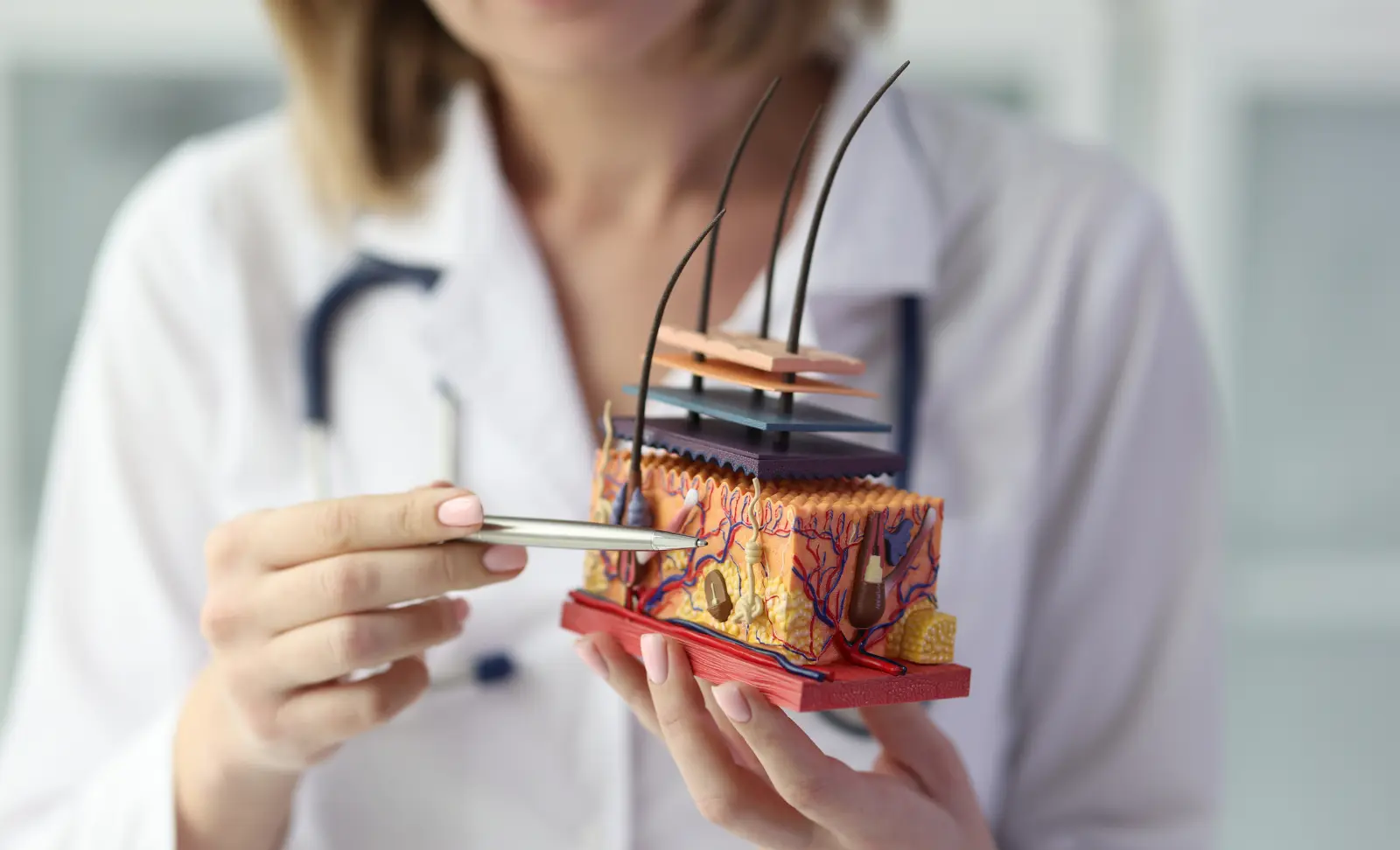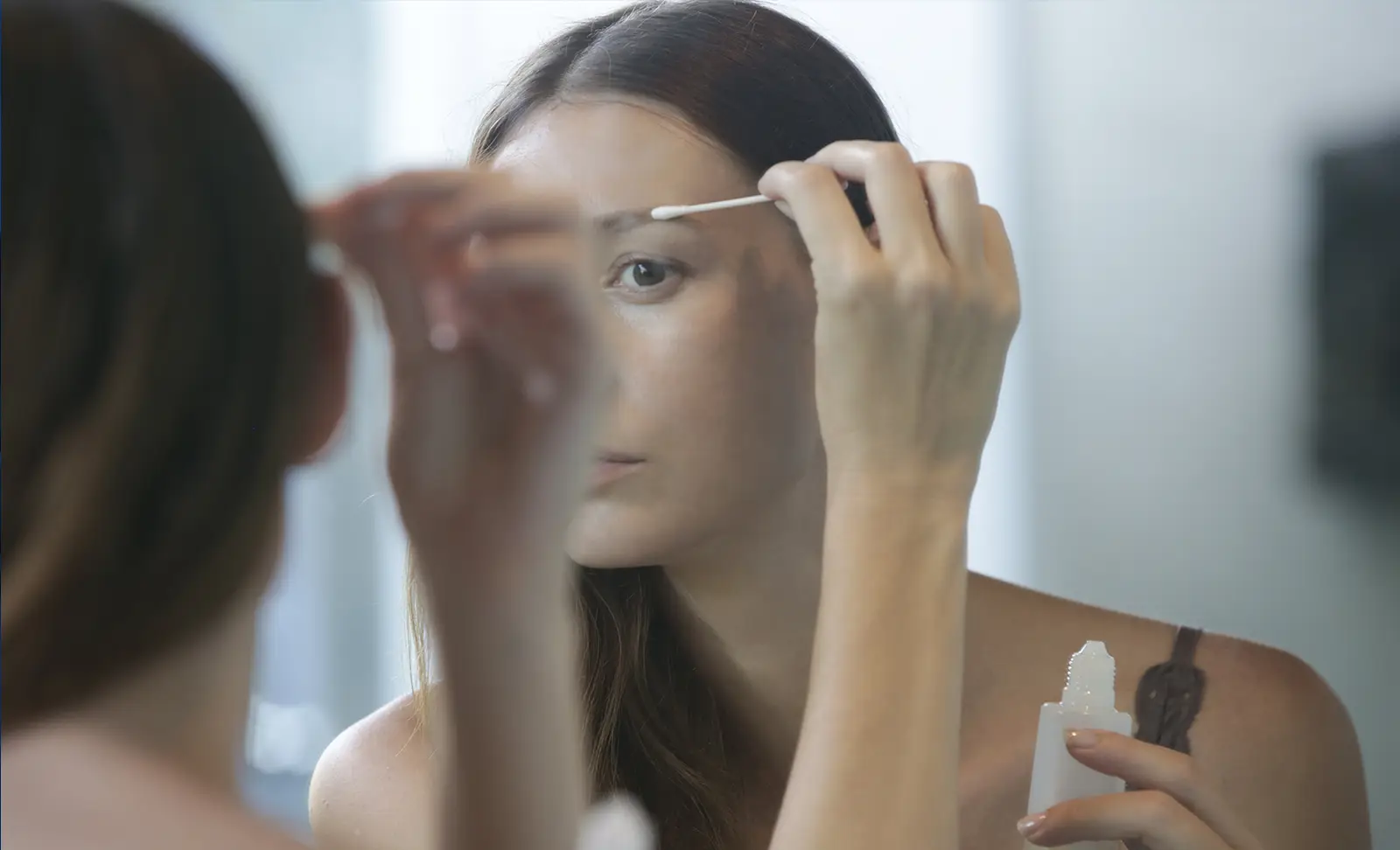
When we think of hair loss and baldness it’s easy to straight away think of men, however, around one third of women will experience hair loss at some point in their lives. There are different types of hair loss for females, and all can be very distressing. Today, we’re going to discuss female pattern baldness, what it is and if it can be treated.
What is female pattern baldness?
Female pattern baldness, also referred to as androgenetic alopecia is the most common cause of hair loss in women, just as it is in men. Androgenetic alopecia causes an inherited sensitivity to the effects of male hormones (androgens) on the scalp and the hair follicles, this causes thinning of the hair in the same way that it does with men. However, women rarely develop a receding hairline and do not develop the same pattern baldness or complete baldness that men do.
Androgenetic alopecia is most commonly seen in women after the menopause but it can in some cases occur in younger women and can even begin in puberty. When women lose their hair due to female pattern baldness the hair loss is from the whole scalp and is uniform, the thinning rarely results in female baldness but the hair thinning can become more apparent at the front or the back of the scalp.
What causes female pattern baldness?
In most cases, hair loss is in your genetics with many parents passing their hair loss issues down to their children, so if your parents or grandparents suffered with hair loss it is likely that at some stage, you will too. However, with female pattern baldness, it is likely that it could be a result of a change in your hormones, which is why many women experience hair loss after menopause.
There are a number of other reasons for female hair loss, including:
Anaemia
Anaemia is a blood disordered that is typically caused by a lack of iron in your diet, or if your cells are not absorbing the iron. Iron is a very important nutrient for the health of your hair. If you notice that your hair is thinning it could be an idea to check with your GP to see if you could have some degree of anaemia.
Iron levels can easily be corrected by a change in your diet or iron supplements, once you manage to get your iron levels right you should begin to see your hair getting back to normal.
PCOS
Polycystic Ovarian Syndrome, commonly known as PCOS is a hormone disorder, which affects your endocrine levels, which causes hormone imbalances. PCOS can cause an increased level of the androgens: testosterone and dihydrotestosterone (DHT). The increased amount of DHT is what can cause hair loss in some women.
If these androgens are found in high amounts they can latch onto the hair follicles and start to affect the hair, which in turn can eventually cause hair loss. DHT can clog the hair follicles, which means you can no longer create new hairs, this is essentially a form of androgenetic alopecia.
Pregnancy
During pregnancy you put your body through a great deal of stress, hormone levels are completely different to normal which will cause a lot of changes in the body and to your hair.
One of the main hormone changes during pregnancy is an increase in the level of Oestrogen your body produces, this causes your hair to remain in the growing stage of the hair growth cycle, it also stimulates hair growth. Due to this, during pregnancy, you can expect to have a wonderfully full head of hair.
However, once you give birth things can be quite different. Once your hormones return to normal levels they can cause quite a shock to the body, and to the hair. The oestrogen that kept your hair from falling out will reduce, causing the hair to shed, causing a lot of hair to suddenly fall out. The hair will start to grow again, and return to your normal pre-pregnancy growth cycle.
Other hair loss causes
There are many other types of hair loss and in some cases, your hair loss could be permanent. It is important to get a professional to assess your hair loss, this will able you to discover more about the type of hair loss you may be experiencing and the solutions available to you.
What does female pattern baldness look like?
Female pattern baldness can be defined into different stages which form the Ludwig system. The stages are broken down as followed;
Stage 1: The hair will thin around your natural parting
Stage 2: The thinning will increase around the parting, resulting in the parting appearing much wider
Stage 3: The hair will thin throughout the scalp and you may end up with noticeable see-through areas around the crown
Can female pattern baldness be treated?
Women may experience noticeable hair loss during a major hormonal change, such as after pregnancy, menopause and even during the discontinuation of birth control pills. In most cases, the hair loss does not become terribly advanced and in most cases, is only temporary. Most women will discover their hair will grow back to normal within a year.
If however, you have any concerns about your hair loss and would like to speak to one of our specialists, please contact us today for a no obligation consultation.


